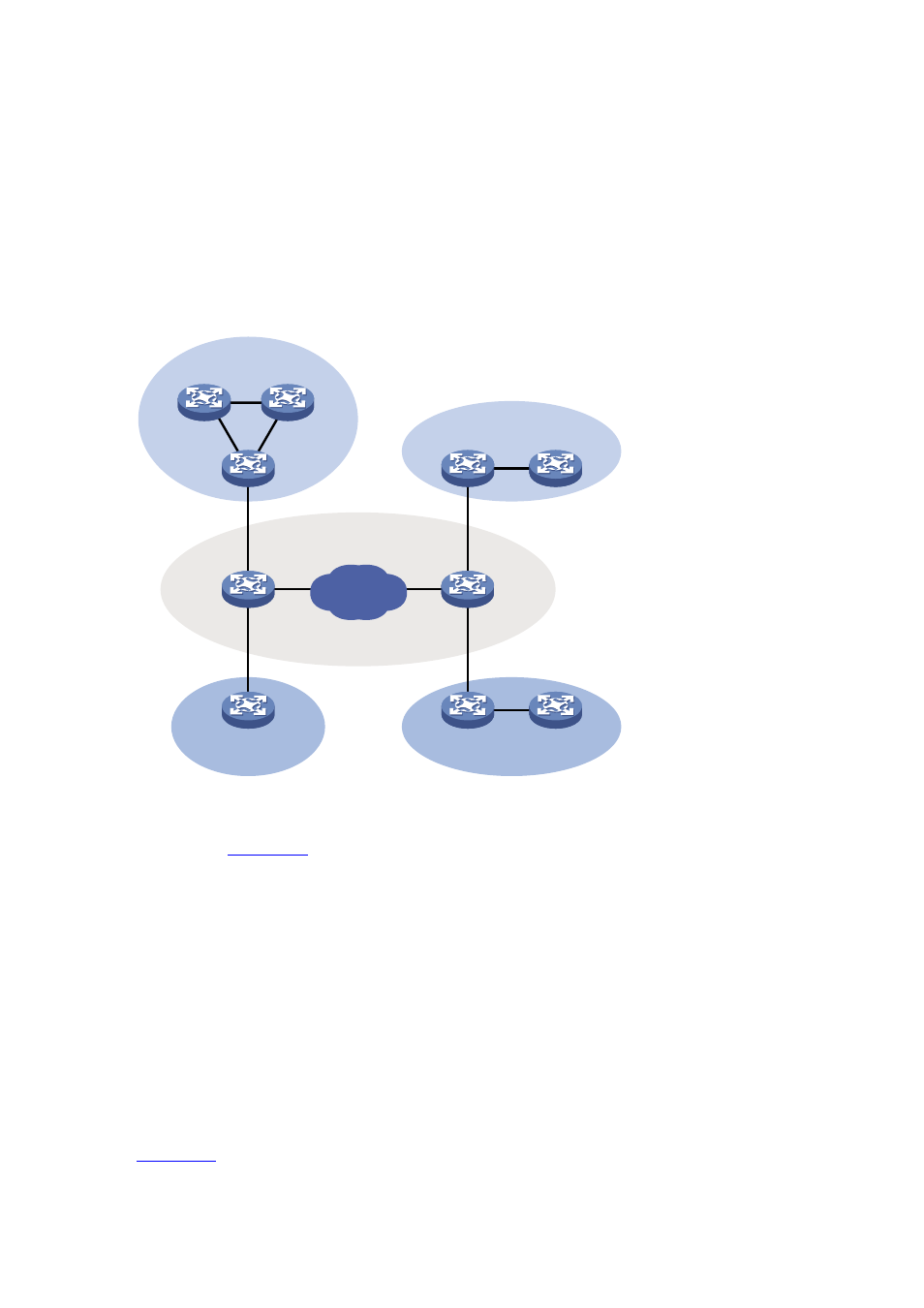How qinq works, Qinq frame structure, 2 qinq frame structure – H3C Technologies H3C S7500E Series Switches User Manual
Page 271

20-2
Allows the customers to keep their current network configurations when the service provider
upgrades the service provider network, thus making the customer networks more independent.
How QinQ Works
The devices in the public network forward a frame only according to its outer VLAN tag and learn its
source MAC address into the MAC address table of the outer VLAN. The inner VLAN tag of the frame
is transmitted as the payload.
Figure 20-1
Schematic diagram of the QinQ feature
Network
Service provider network
Customer network A
VLANs 1 to 10
Customer network A
VLANs 1 to 10
Customer network B
VLANs 1 to 20
Customer network B
VLANs 1 to 20
VLAN 3
VLAN 3
VLAN 4
VLAN 4
As shown in
, customer network A has CVLANs 1 through 10, while customer network B
has CVLANs 1 through 20. The SVLAN allocated by the service provider for customer network A is
SVLAN 3, and that for customer network B is SVLAN 4. When a tagged Ethernet frame of customer
network A enters the service provider network, it is tagged with outer VLAN 3; when a tagged Ethernet
frame of customer network B enters the service provider network, it is tagged with outer VLAN 4. In this
way, there is no overlap of VLAN IDs among customers, and traffic from different customers can be
identified separately.
QinQ Frame Structure
A QinQ frame is transmitted double-tagged over the service provider network. The inner VLAN tag is
the CVLAN tag while the outer one is the SVLAN tag that the service provider has allocated to the
customer.
shows the structure of single-tagged and double-tagged Ethernet frames.